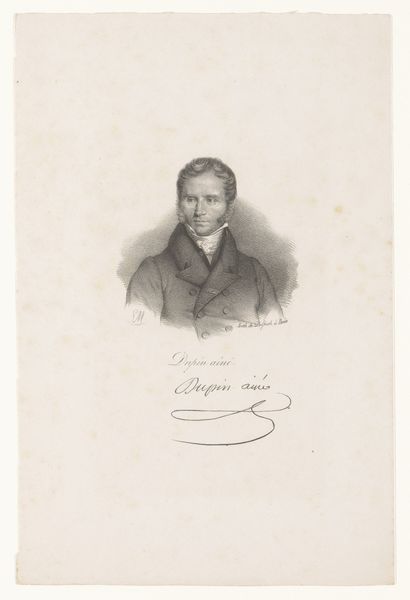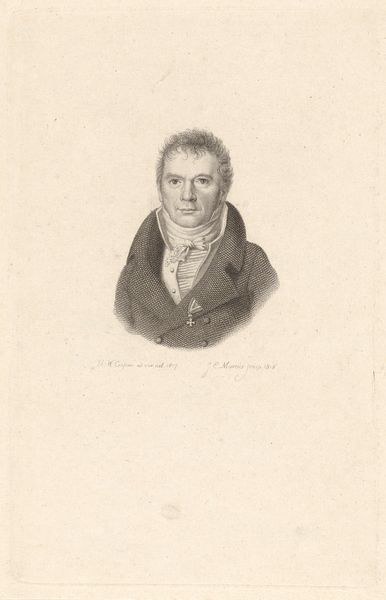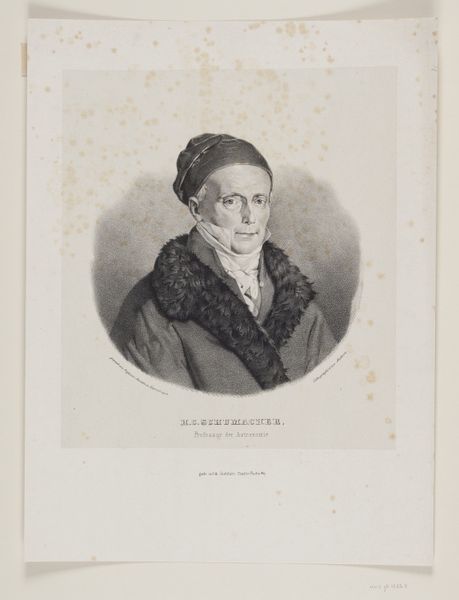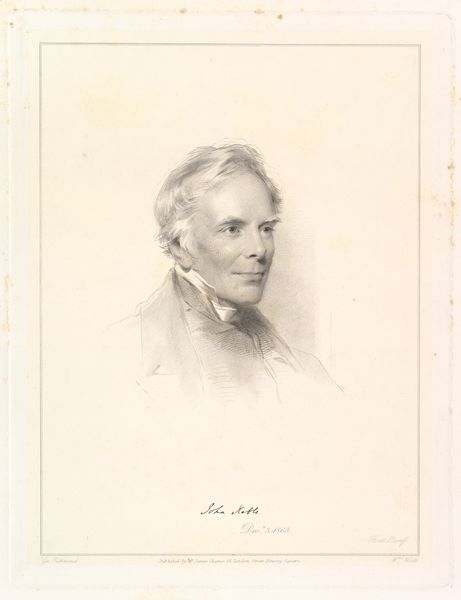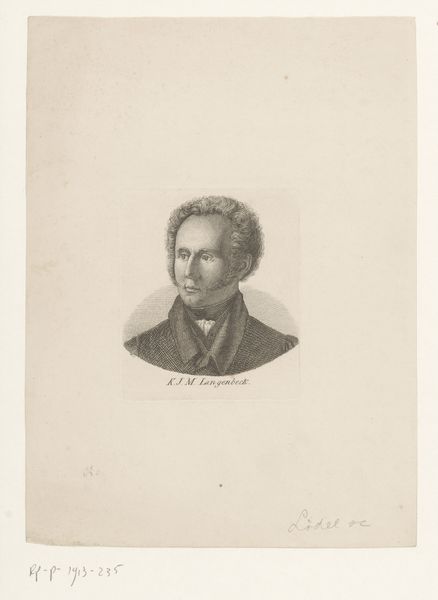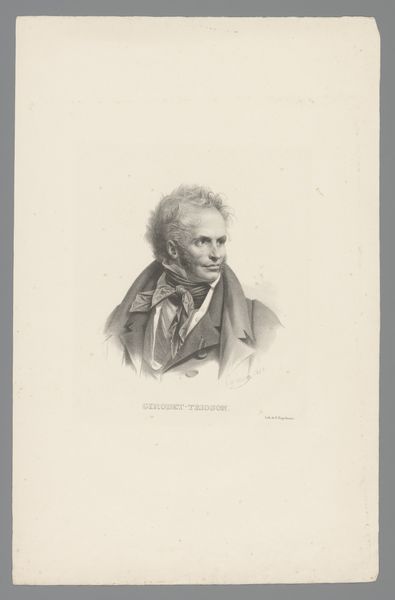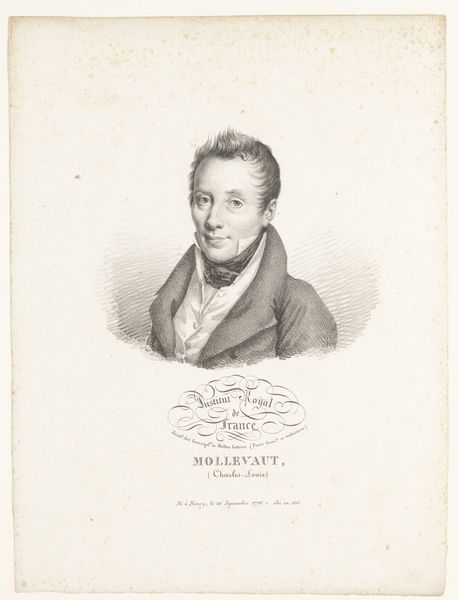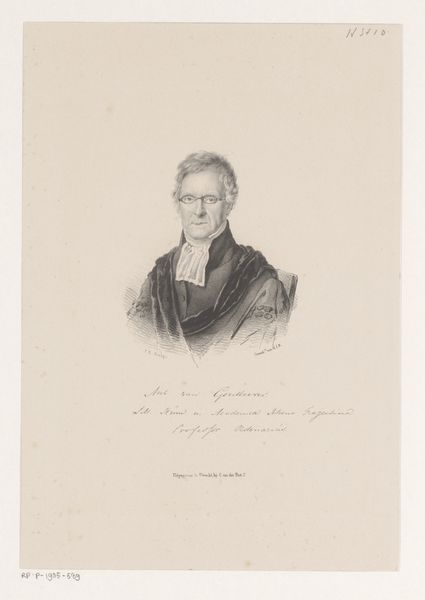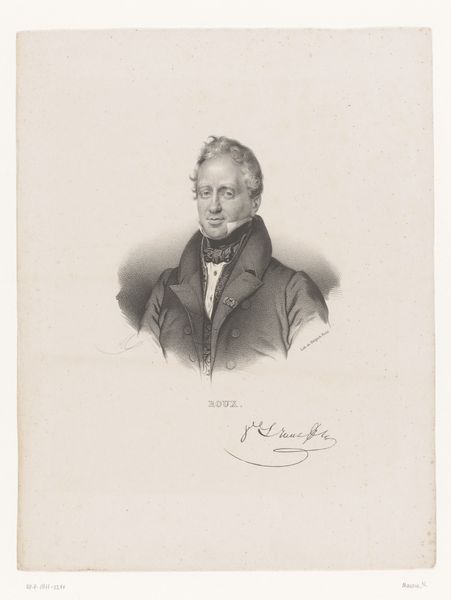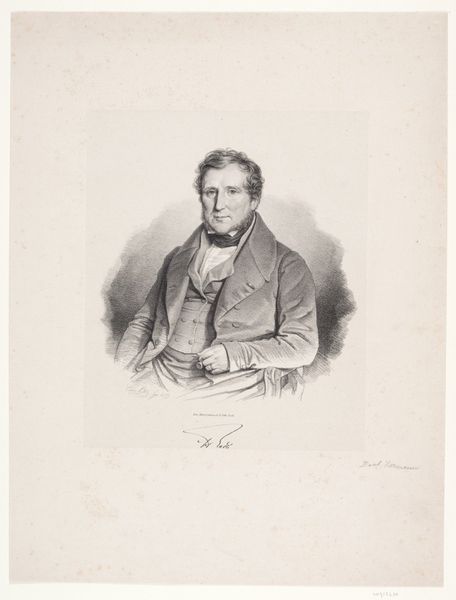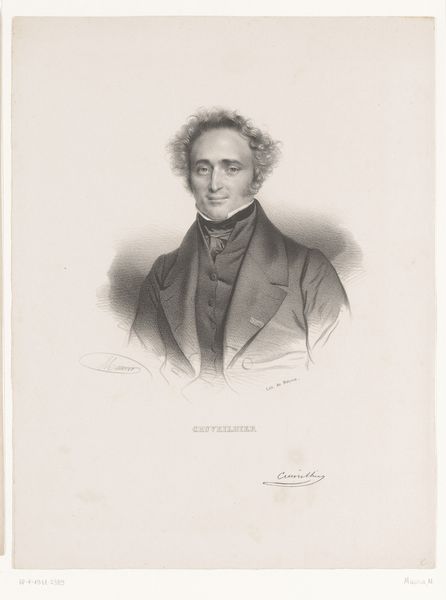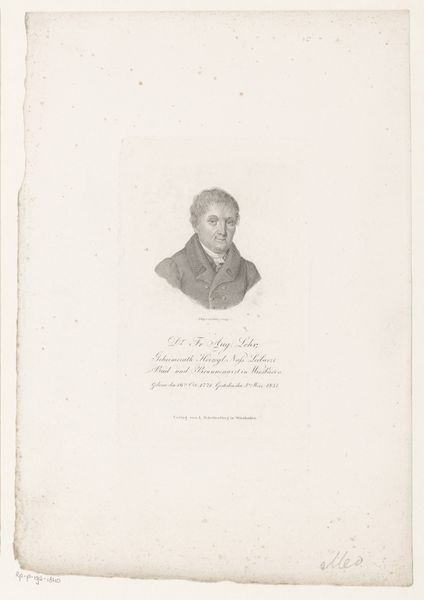
lithograph, print, graphite
#
portrait
#
neoclacissism
#
lithograph
# print
#
graphite
Dimensions: 462 mm (height) x 318 mm (width) (bladmaal)
Curator: Looking at this lithograph, "Henrik Steffens," created around 1827 by J.L. Lund, presently held in the SMK, what stands out to you initially? Editor: It possesses an almost haunting stillness. The soft graphite rendering creates a subtle tension – it’s like the moment before someone speaks, before something shifts. Curator: The social context of portraiture in the early 19th century is key. Steffens, a philosopher, wasn't just anyone. These kinds of images circulated within particular intellectual and social circles, reinforcing status. Think of it as a visual assertion of bourgeois identity. Editor: Yes, but how accessible was a lithograph like this? The original, a drawing, feels exclusive; but a lithograph suggests broader circulation. Was it a bid for public intellectualism or remaining within elite circles? The distribution method itself encodes power dynamics. Curator: I agree, the print medium introduces complexities. We can explore it further: neoclassicism often signaled rationality and order after revolutionary turmoil. Does that classical restraint speak to Steffens' philosophical approach? And does this representation solidify a certain kind of masculinity? Editor: It certainly seems so, through conventions of seriousness and control. But I’m intrigued by the light. The shadow work softens him, subtly humanizes the otherwise imposing intellectual. Does that soften the ideologies of that era, or does that emphasize it even more? It all leads to that interrogation. Curator: This highlights how seemingly straightforward portraits operate within multifaceted narratives. Lund, a noted artist himself, positions Steffens within this framework, emphasizing certain features, and creating what amounts to an ideological statement about knowledge and authority. Editor: Exactly, these images aren't neutral. From composition to circulation, they participate in constructing narratives. Curator: Precisely! Looking closer, we see not just Steffens, but also the forces at play in shaping intellectual and cultural authority. Editor: I’m still considering how its material accessibility alters the perception of power being depicted.
Comments
No comments
Be the first to comment and join the conversation on the ultimate creative platform.
